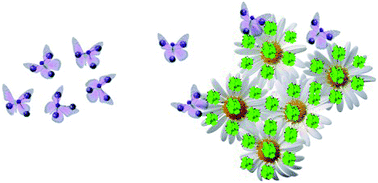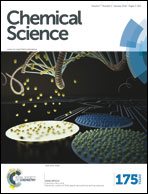Stabilization of volatile Ti(BH4)3 by nano-confinement in a metal–organic framework†
Abstract
Liquid complex hydrides are a new class of hydrogen storage materials with several advantages over solid hydrides, e.g. they are flexible in shape, they are a flowing fluid and their convective properties facilitate heat transport. The physical and chemical properties of a gaseous hydride change when the molecules are adsorbed on a material with a large specific surface area, due to the interaction of the adsorbate with the surface of the host material and the reduced number of collisions between the hydride molecules. In this paper we report the synthesis and stabilization of gaseous Ti(BH4)3. The compound was successfully stabilized through adsorption in nanocavities. Ti(BH4)3, upon synthesis in its pure form, spontaneously and rapidly decomposes into diborane and titanium hydride at room temperature in an inert gas, e.g. argon. Ti(BH4)3 adsorbed in the cavities of a metal organic framework is stable for several months at ambient temperature and remains stable up to 350 K under vacuum. The adsorbed Ti(BH4)3 reaches approximately twice the density of the gas phase. The specific surface area (BET, N2 adsorption) of the MOF decreased from 1200 m2 g−1 to 770 m2 g−1 upon Ti(BH4)3 adsorption.


 Please wait while we load your content...
Please wait while we load your content...